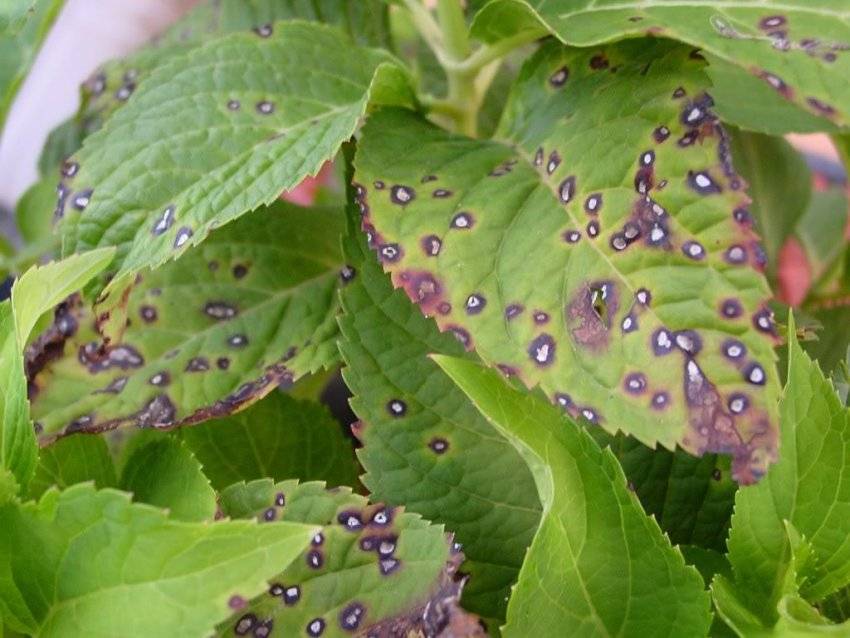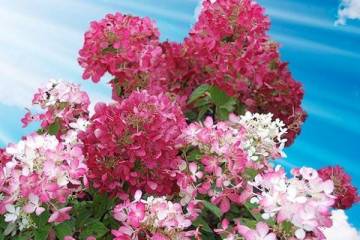Hydrangea Endless Summer - planting and caring for the plant
Content:
Hydrangea Endless Summer officially belongs to young varieties, but breeding work on this hybrid has been going on for more than 50 years. Scientists set a goal to develop an ideal hydrangea variety that would have a pleasant appearance, high resistance to frost and disease. So in 2003 the Endless Summer hydrangea was finally born, a more complete name - Endless Summer Original.
Description and features of the variety
Hydrangea (hydrangea) Eternal summer is a perennial frost-resistant flowering plant that grows no more than 1 meter in height. On erect shoots are oval leaves of a rich green hue. The ends of the leaf plates are slightly pointed and elongated, and the edges are serrated.
Large spherical inflorescences are located at the top of the shoots. Small flowers have one row of blue, lilac and pink petals. Hydrangea blooms all summer, new buds bloom instead of fading buds. Endless summer refers to a large-leaved type of hydrangea.
How and where to plant
To grow hydrangeas, it is necessary to choose areas illuminated by the sun. However, it is worth considering that the open area should not be blown through by cold through winds. The best locations are near buildings, hedges, or tall trees.
Planting Summer hydrangea is as follows:
- All weeds are removed from the dug area with a rake.
- Organic fertilizers are introduced: humus, rotted manure, compost.
- Dig holes with a depth of 3 centimeters more than the length of the roots.
- The bottom of each hole is covered with drainage material with a layer of 4-6 centimeters.
- A soil mixture is poured over it.
- The wells are moistened with lukewarm water.
- One seedling is planted in the holes.
- Sprinkle around the remaining potting mix.
After planting, it is necessary to strictly monitor the condition of the seedlings for about a crescent. It is recommended to regularly water the soil and cover the soil with dry leaves or sawdust.
Bush care
After planting and caring for hydrangea eternal summer, special attention must be paid. mistakes made in the cultivation of flowering plants are immediately reflected in their ability to open buds.
Watering
The moisture-loving Endless Summer hydrangea is especially sensitive to soil moisture. The soil should not be allowed to dry out, therefore it is recommended to mulch the surface of the earth.
Top dressing
Large-leaved hydrangea Endless summer needs to be fed twice a month. During the set of deciduous mass, the flower needs nitrogen fertilizers, and with the beginning of flowering, potassium-phosphorus fertilizers.
Pruning
Pruning is a must-have procedure for hydrangea care. It is carried out in the fall, rotten and dry shoots are removed at the root. If the bush is more than 4-5 years old, then you need to cut off the old branches so that the bush is renewed.
Propagation of hydrangea Endless Summer
Any cultivation of ornamental plants is not complete without their reproduction. Hydrangeas are mostly propagated by cuttings only.The shrub from which the shoots are cut must be over 3 years old.
Description of the flower reproduction procedure step by step:
- The lower leaf plates are removed from the cuttings, but at least 3 leaves are left on top.
- Then the box is filled with a substrate and cut off shoots are planted along its edge.
- From above, the container is covered with a film for a greenhouse effect.
- Water the cuttings twice a week until they take root.
Preparing for winter
Despite the fact that the Eternal Summer variety is characterized by high frost resistance, it is recommended to cover the bush for the winter. This is done to preserve the flower buds, which are responsible for the quality of the subsequent flowering.
First, each bush is spud and mulched with a thick layer of peat or sawdust to insulate the roots. A rectangular structure of boards is erected around the flower. Wrap it over with spunbond or lutrasil and secure it carefully.
Pests and diseases
Hydrangea Endless Summer is one of the few flower varieties that is immune to a disease called powdery mildew. But a false version of this disease often affects an ornamental bush. A whitish bloom forms on the leaf blades, which inhibits the normal development of the plant. To combat, drugs that contain copper are used.
Chlorosis is another disease that can affect the bush. Leaf plates begin to fade, as the process of chlorophyll formation in cells is disrupted.
The causes of this disease can be:
- lack of natural light, which is so necessary for photosynthesis and the formation of chlorophyll;
- poor-quality irrigation water: hard tap water, with a high alkali content;
- elevated temperatures, prolonged dry periods.
To get rid of chlorosis, the plant is sprayed with a solution of ferrous sulfate, and the soil is treated with it.
Among the pests of the Endless Summer, a spider mite is distinguished. These are small insects that are located on the underside of the leaves and weave a thin web. Parasites eat the juicy parts of leaves and stems, which provokes a stop in the development and flowering of the bush.
Hydrangea Everlasting Summer is a variety that blooms with double blue, pink and purple inflorescences. This is a unique flower that, despite its external fragility, has a high resistance to cold and disease. If you regularly and timely take care of him, then he will not cause any trouble and will delight his with beautiful flowering until the end of summer.



















